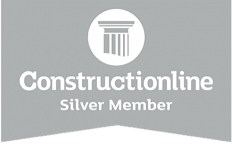
Wondering what ‘encapsulation’ means when talking about asbestos? Where appropriate, asbestos should be encapsulated and maintained rather than removed completely. For more information on the definition read more here… This term simply means an impervious material (that does not allow fluid to pass through it) is applied to the area to prevent the release of fibres.
This can occur in many forms, and some examples of common asbestos encapsulation include -
-
Mechanical Encapsulation
“E.g. by use of board or sheet materials and simply painting with domestic paint. Normally board or sheet materials should not be fixed through the asbestos material. However, if the assessment shows that the best method for mechanical protection requires screw fixing through the asbestos material, appropriate controls should be put in place to minimise fibre release and spread of contamination
-
High Build Elastomeric Coating
A liquid encapsulant applied in several layers suitable for encapsulation of sprayed coatings, insulation, boards, etc. (such as ‘Idenden ET150’). These encapsulants can provide impact resistance as well as elasticity, especially when incorporating a reinforcing membrane, e.g. calico cloth or scrim. Correctly applied to asbestos applications, these encapsulants may provide up to 20 years of life if undisturbed. Manufacturer’s instructions should be followed.
-
Penetrating Encapsulants
Suitable for encapsulation of sprayed coatings, insulation, boards, etc. (such as ‘Incorez’ or ‘Serpiflex’). Spray applied encapsulants are available which will penetrate friable ACMs. Such encapsulants have many advantages over other forms, but their application must follow manufacturers’ instructions for effective results.
-
Water Based Epoxy Resins
These are available with chopped strand mat (glass fibre) and provide high impact resistance and an easily cleanable surface (such as ‘3M Scotchkote’ encapsulant).”
Quoted text taken from ‘Guidance for the Encapsulation of Asbestos Containing Materials’ by ARCA.






